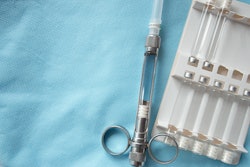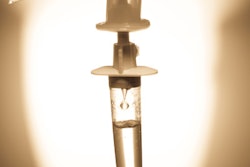
Safe anesthetic procedures begin with patient and case selection, according to oral and maxillofacial surgery expert Stuart Lieblich, DMD. He spoke about keeping patients safe during office-based anesthesia procedures at the recent 2019 ADA FDI World Dental Congress in San Francisco.
 Stuart Lieblich, DMD.
Stuart Lieblich, DMD.Dr. Lieblich, a practicing oral surgeon and clinical professor at the University of Connecticut School of Dental Medicine, emphasized that office-based anesthesia procedures are an important part of dentistry and help expand access to care.
"With the provision of office anesthesia, we're able to provide access to care that would basically be impossible for most patients to obtain," he told DrBicuspid.com. "So it's a very important service and an important function that we do in our field."
Nevertheless, recent sedation-related regulations and guidelines have brought patient safety to the forefront of the dental community. Dr. Lieblich shared his tips for selecting ideal patients and cases for office-based anesthesia procedures.
1. Patient selection
The first step to identifying healthy patients is to take a thorough medical history. This includes talking with patients or their parents about their medical history and medications. It's also prudent to take baseline vital signs and listen to the patient's heart and lungs to rule out any abnormalities.
Once you have an understanding of the patient's baseline statistics, you should follow up on any illnesses or medications. Not all diseases are the same, and treatment can't be a one-size-fits-all approach. For instance, one patient may have mild asthma and rarely need an inhaler, while another may have to take two or three asthma medications daily to manage the condition.
"That's an asthmatic patient who we would recommend treating as a patient in the hospital setting," Dr. Lieblich said. "But for mild asthma -- it's a very common disorder -- the medications are very obvious. Not only should the patient have those medicines, but the dentist should have full medications or resuscitation equipment to treat asthma should it exhibit itself during a case."
“Be able to say no to the patient.”
Another great way to identify patients who are fit for office-based anesthesia procedures is to ask about their activity level. Dr. Lieblich recommended doing this with the metabolic equivalent of task (MET) metrics.
METs quantify the difficulty of performing everyday tasks, such as walking up two flights of stairs or playing with a dog for 10 minutes. The METs activities are listed on a scale of 1 through 10, with higher scores corresponding to higher levels of activity. A score of 4 is generally a good cutoff point for office-based procedures, he noted.
"They're easy questions to ask a patient," Dr. Lieblich said. "I find they give us quite a bit of information when discerning which patients are good candidates for office sedation or anesthetic."
In the end, patient selection is all about identifying patients who have enough health and lung capacity to maintain stable oxygens levels should they stop breathing during a procedure, he said. When a patient doesn't meet that threshold, it's important to come up with an alternative solution.
"Be able to say no to the patient -- to say that 'You're not a candidate for me to sedate you in my office,' " Dr. Lieblich said. "To say that 'We can sedate you, but I'll take you to a hospital setting" or 'You have the option of me treating you just with local anesthetics alone or maybe using local anesthetics and nitrous oxide,' which have much less of an effect on the system and are much less likely to trigger any type of respiratory problems."
2. Case selection
Another factor for safe anesthetic procedures is case selection, Dr. Lieblich noted. For instance, the amount of anesthetic needed will vary based on whether the patient needs a primary tooth extracted versus unerupted third molars.
Fortunately, patients in a dental office do not have to be as sedated as heavily as those for other types of surgeries.
"For example, you go to the hospital and have your appendix out, then they have to put you so deeply asleep that you're not breathing," Dr. Lieblich said. "Those are much deeper levels of anesthesia and potentially have more side effects or complications. Whereas in the dental office setting ... we're maybe mainly treating their anxiety and ability to cooperate with a procedure as opposed to trying to get true surgical anesthesia."
Case selection also depends on whether you can practice in a hospital for more complicated procedures, he noted.
"Most oral surgeons have the ability and hospital privileges for more complicated procedures or less medically healthy individuals," Dr. Lieblich said. "Maintaining that option of going into hospital settings is important in certain cases."



















